- Home
- Leslie Meier
Gobble, Gobble Murder
Gobble, Gobble Murder Read online
Praise for Leslie Meier and her Lucy Stone Mysteries!
Silver Anniversary Murder
“The frenzied pace of the city, effectively contrasted with the more tranquil atmosphere of a small town; the reappearance of familiar characters; and numerous plot twists all contribute to the appeal of this satisfying entry in a long-running series.”
—Booklist
British Manor Murder
“Counts, countesses, and corpses highlight Lucy Stone’s trip across the pond . . . A peek into British country life provides a nice break.”
—Kirkus Reviews
Candy Corn Murder
“Meier continues to exploit the charm factor in her small-town setting, while keeping the murder plots as realistic as possible in such a cozy world.”
—Booklist
French Pastry Murder
“A delight from start to finish.”
—Suspense Magazine
Christmas Carol Murder
“Longtime Lucy Stone series readers will be happy to catch up on life in Tinker’s Cove in this cozy Christmas mystery.”
—Library Journal
Easter Bunny Murder
“A fun and engaging read. It is quick and light and has enough interesting twists and turns to keep you turning the pages. If you like this type of mystery and this is your first meeting with Lucy Stone, it will probably not be your last.”
—The Barnstable Patriot
Books by Leslie Meier
MISTLETOE MURDER
TIPPY TOE MURDER
TRICK OR TREAT MURDER
BACK TO SCHOOL MURDER
VALENTINE MURDER
CHRISTMAS COOKIE MURDER
TURKEY DAY MURDER
WEDDING DAY MURDER
BIRTHDAY PARTY MURDER
FATHER’S DAY MURDER
STAR SPANGLED MURDER
NEW YEAR’S EVE MURDER
BAKE SALE MURDER
CANDY CANE MURDER
ST. PATRICK’S DAY MURDER
MOTHER’S DAY MURDER
WICKED WITCH MURDER
GINGERBREAD COOKIE MURDER
ENGLISH TEA MURDER
CHOCOLATE COVERED MURDER
EASTER BUNNY MURDER
CHRISTMAS CAROL MURDER
FRENCH PASTRY MURDER
CANDY CORN MURDER
BRITISH MANOR MURDER
EGGNOG MURDER
TURKEY TROT MURDER
SILVER ANNIVERSARY MURDER
YULE LOG MURDER
HAUNTED HOUSE MURDER
CHRISTMAS SWEETS
INVITATION ONLY MURDER
CHRISTMAS CARD MURDER
IRISH PARADE MURDER
Published by Kensington Publishing Corp.
GOBBLE, GOBBLE MURDER
LESLIE MEIER
KENSINGTON BOOKS
www.kensingtonbooks.com
All copyrighted material within is Attributor Protected.
This book is a work of fiction. Names, characters, and incidents either are products of the author’s imagination or are used fictitiously. Any resemblance to actual persons living or dead, or events, is entirely coincidental.
KENSINGTON BOOKS are published by
Kensington Publishing Corp.
119 West 40th Street
New York, NY 10018
Compilation copyright © 2020 by Kensington Publishing Corp.
Turkey Day Murder © 2000 by Leslie Meier
Turkey Trot Murder © 2017 by Leslie Meier
All rights reserved. No part of this book may be reproduced in any form or by any means without the prior written consent of the Publisher, excepting brief quotes used in reviews.
To the extent that the image or images on the cover of this book depict a person or persons, such person or persons are merely models, and are not intended to portray any character or characters featured in the book.
Kensington and the K logo Reg. U.S. Pat. & TM Off.
ISBN: 978-1-4967-2625-4
ISBN-13: 978-1-4967-2625-4
ISBN-10: 1-4967-2625-1
Table of Contents
Praise
Also by
Title Page
Copyright Page
TURKEY DAY MURDER
CHAPTER 1
CHAPTER 2
CHAPTER 3
CHAPTER 4
CHAPTER 5
CHAPTER 6
CHAPTER 7
CHAPTER 8
CHAPTER 9
CHAPTER 10
CHAPTER 11
CHAPTER 12
CHAPTER 13
CHAPTER 14
CHAPTER 15
CHAPTER 16
CHAPTER 17
CHAPTER 18
CHAPTER 19
CHAPTER 20
CHAPTER 21
CHAPTER 22
CHAPTER 23
TURKEY TROT MURDER
PROLOGUE
CHAPTER 1
CHAPTER 2
CHAPTER 3
CHAPTER 4
CHAPTER 5
CHAPTER 6
CHAPTER 7
CHAPTER 8
CHAPTER 9
CHAPTER 10
CHAPTER 11
CHAPTER 12
CHAPTER 13
CHAPTER 14
CHAPTER 15
CHAPTER 16
CHAPTER 17
CHAPTER 18
CHAPTER 19
CHAPTER 20
Teaser chapter
TURKEY DAY MURDER
CHAPTER 1
“Look at that face. I ask you. Is that the face of a cold-blooded killer?”
In her usual seat in the second row, part-time reporter Lucy Stone perked up. Until now, she’d been having a difficult time paying attention at the Tuesday meeting of the Tinker’s Cove Board of Selectmen, even dozing off for a few moments during the town assessor’s presentation of the new valuation formulas.
Lucy studied the face in the photograph Curt Nolan had propped up on an easel in the front of the hearing room, allegedly the face of a multiple killer: big brown eyes; an intelligent expression; a friendly, if somewhat toothy, smile. He didn’t look like a mass murderer to her—he looked like a plain old mutt.
“Kadjo’s not just some mutt,” continued Curt Nolan, his owner and advocate at the dog hearing. “He’s a Carolina dog. I went all the way to North Carolina to get him from a breeder there. He’s descended from the dogs that accompanied humans across the Bering land bridge from Asia to America thousands of years ago. He’s a genuine Native American dog.” He paused for emphasis and then concluded, “Why, he’s got more right to be here than you do.”
That comment was aimed at Howard White, chairman of the board of selectmen, who was chairing the dog hearing. White—a tall, thin, distinguished-looking man in his early sixties—didn’t much like it and glared at Nolan from behind the bench where he was sitting with the four other selectmen as judge and jury.
This was more like it, thought Lucy, studying Nolan with interest. Most people, when called before the board for violating the town’s bylaws, exhibited a remorseful and humble attitude. Nolan, by contrast, seemed determined to antagonize the board members, especially Howard White.
Even his clothing declared he was different from the majority of people who resided in the little town of Tinker’s Cove, Maine. Instead of the usual uniform of khaki slacks, a button-down shirt, and loafers, which was the costume of choice for board meetings, Nolan was wearing a fringed leather jacket, blue jeans, and cowboy boots. His glossy black hair was brushed straight back and tied into a ponytail with a leather thong. A second leather thong, this one decorated with a bear claw, hung from his neck. His face was tanned and deeply creased, as if he spent a lot of time outdoors in the sun.
; “We’re not interested in the animal’s bloodlines,” growled White. “We’re here to decide if he’s a threat to the community. I’d like to hear from the dog officer.”
Cathy Anderson stepped to the front of the room and consulted a manila folder containing a few sheets of paper. Lucy had struck up an acquaintance with Cathy over the years and knew she hated speaking in public, even in front of the handful of citizens who regularly attended the selectmen’s meetings. Cathy flipped back her long blond hair and nervously smoothed the blue pants of her regulation police uniform. That uniform didn’t do a thing for her well-upholstered figure, thought Lucy.
“The way I see it,” said Cathy, taking a deep breath, “the problem isn’t the dog—it’s the owner.”
Hearing this, White exchanged a glance with Pete Crowley. Crowley was a heavyset man who tamed his thick white hair with Brylcreem so that the comb marks remained permanently visible. Also a board member, Crowley was Police Chief Oswald Crowley’s brother and a strict law-and-order man.
“Mr. Nolan has refused to license the dog,” continued Cathy, “in clear violation of state and town regulations. He also lets the dog run free, which is a violation of the town’s leash law. If the dog was properly restrained we could avoid a lot of these problems.”
Crowley beamed at her and nodded sympathetically.
“Can I say something?” Nolan was on his feet. Without waiting for permission from White, he began defending his pet. “Like I told you before, Kadjo is practically a wild dog. He’s closely related to the Dingo dogs of Australia and other wild breeds. He needs to be free—it’d be cruel to tie him up. And licensing him? That’s ridiculous! We don’t license bear or moose or deer, do we?”
“You’re out of order!” White banged his gavel, startling his fellow board member Bud Collier.
Collier, a retired gym teacher, slept through most board meetings, rousing himself only to vote. Lucy often debated with herself whether she should mention this in her stories for the paper, but so far she had refrained. He was such a nice man, and so popular with the townsfolk, that she didn’t want to embarrass him. Nevertheless, she wasn’t entirely comfortable about covering up the truth.
“Ms. Anderson has the floor,” said White, raising a bristly white eyebrow. “Please continue.”
“Thank you.” Cathy glanced at Nolan and gave him an apologetic little smile. “I’d like to call a witness, if that’s all right with the board.”
White nodded.
“I’d like to call Ellie Martin, who lives at 2355 Main Street Extension. Ellie, would you please tell the board members what happened last Monday?”
Ellie Martin stood up, but remained by her chair in the rear of the room. She was a pleasant-looking woman in her forties, neatly dressed in a striped turtleneck topped with a loose-fitting denim jumper. She was barely five feet tall.
“We can’t hear you from there,” said White. “Step down to the front.”
Clutching her hands together in front of her, Ellie came forward and stood next to Cathy.
“Just tell them what happened,” prompted Cathy.
“I don’t want to make trouble,” began Ellie, glancing back at Nolan. “I only filed the report because I want to get the state chicken money.”
“What state money is this?” demanded board member Joe Marzetti. Owner of the IGA and a stalwart of the town Republican committee, Marzetti was strongly opposed to government spending.
“It’s to reimburse people whose livestock has been destroyed by dogs,” explained Cathy. “It’s actually town money mandated by state law—it comes out of the licensing fees.”
“But you said Nolan hasn’t licensed the dog.”
Lucy resisted the urge to roll her eyes. Trust Marzetti to find an excuse—any excuse—that would save the town a few dollars.
“That doesn’t matter,” said Cathy. “It’s a state law.”
“Well, if it’s a law, how come I never heard of it?” Marzetti had furrowed his forehead, creating a single fierce black line of eyebrow.
“Well, it hasn’t come up in a long time. Not many people bother to keep chickens or sheep these days.”
“What kind of money are we talking here—how much are the taxpayers going to have to cough up?”
“Thirty dollars.”
“Thirty dollars for a chicken!” Marzetti’s face was red with outrage. “Why, I sell chickens for a dollar nine a pound in my store! That’s ridiculous.”
“Thirty dollars total,” said Cathy. “Mrs. Martin had a dozen hens and she’ll get two dollars and fifty cents for each one.”
“Oh, that’s more like it,” said Marzetti.
“The dog killed the chickens? Is that what this is about?” demanded Pete Crowley, who was growing impatient.
“You’d better tell them,” said Cathy, giving Ellie a little nudge.
“Well, it was like this,” began Ellie. “I was busy inside the kitchen, cleaning the oven, when I heard an awful commotion in the yard outside. I went to look and saw the dog, Kadjo, chasing the chickens. They’re nice little pullets, Rhode Island Reds. I raised them myself from chicks I got last spring. They’d just started laying and I was getting five or six eggs a day. That is, I used to. The dog got every one.” Ellie’s face paled at the memory. “It was an awful sight.”
“Every one?” Sandy Dunlap, the newest board member and the only woman, was clearly shocked at the extent of the carnage. She was also sympathetic. When she’d run for election last May, she’d promised to be sympathetic and she’d stuck to her word. Nobody with a problem got short shrift from Sandy. “That must have been awful. I think the least we can do is vote to reimburse you for the chickens. I’d like to make a motion.”
“That’s not the question,” snapped White. “She’ll get the money. What we’re here to decide is if the dog should be destroyed or banished or what.”
“Hold on a minute,” said Nolan, jumping to his feet. “I haven’t heard anything here about it being my dog. How can you be sure it was Kadjo?”
White banged down his gavel. “Mr. Nolan, I’m warning you.”
Nolan sat down, perching on the edge of his seat.
Lucy gave Nolan points for trying, however. In her opinion, White tended to be something of a small-town dictator.
Ellie smiled apologetically at Nolan. “Curt, you know perfectly well I’d recognize Kadjo anywhere. After he’d finished chasing all the birds, he picked one up in his mouth and brought it over and put it at my feet, like a present. He was real proud of himself. It was Kadjo, all right.”
“Well, Ellie, he was just doing what comes naturally,” said Nolan in a soft voice that made Lucy wonder exactly what their relationship was. “It’s his instinct, you know.”
White reached for his gavel, but was interrupted by Crowley.
“Is the dog vicious?” Crowley asked. “That’s what we’ve got to determine. I’d like to hear from the animal control officer.”
“Ms. Anderson—come on now. It’s about time we had your report,” said White.
Cathy Anderson leafed through the thin folder. She gave a big sigh.
“The way I see it, the dog isn’t vicious. He isn’t a problem dog. This is the first complaint I’ve had about him. Kadjo needs a little training and he really ought to be neutered. Frankly, I think that would take care of the problem.”
“Neutered!” Nolan was back on his feet, his face bright red with anger. “That’s outrageous. Besides, he’s a pedigreed dog and I plan to breed him.”
White banged the gavel and glared at Nolan, who promptly sat down.
Watching Nolan, Lucy saw that he was having a hard time restraining himself. He seemed tightly coiled, like a spring, ready to explode.
“A lot of people feel that way but it’s really kinder in the long run. He’ll have a longer, healthier life,” said Cathy. She turned to White. “That’s my recommendation.”
“Thank you,” said White. “Do I have a motion?”
“You’
d like that, wouldn’t you?” demanded Nolan, unable to contain himself any longer. “Face it. It’s what you’ve been doing to my people for thousands of years. Trying to wipe us out. It’s not enough that the U.S. government has waged a sustained policy of genocide against Native American people for hundreds of years. Now you’re after our dogs, too. You can’t let wild Native American dogs breed, can you? Nope. All you want are Welsh corgis and Scottish terriers and Irish setters—Old Country breeds.”
“Order!” snapped White, banging down his gavel. “You’re out of order, Mr. Nolan. That vote isn’t until next week.”
Suddenly, a little lightbulb went on in Lucy’s head and she understood the tension between White and Nolan. Nolan was a Native American, one of the town’s few remaining members of the Metinnicut Indian tribe, the original inhabitants of the area before European settlers arrived in the early eighteenth century. The tribe had recently applied to the federal government for recognition and had asked the board to endorse their application. That vote was scheduled for next week, and if Lucy had been asked to predict the outcome, she’d have to say the Metinnicuts’ prospects weren’t good with this board, especially White.
“Do I hear a motion?”
Bud Collier roused himself from his nap. “The dog’s vicious. It’s a killer. I move we destroy it.”
Lucy snapped to attention, astonished. This was the last thing she had expected. In similar cases up until now the board had always voted to recommend a course of obedience training, perhaps followed with a probationary period. Collier’s habit of napping had obviously prevented him from getting the correct information, which happened all too frequently. Usually, however, the board members amended his motion if it seemed inappropriate. In fact, Lucy noticed, Sandy Dunlap and Joe Marzetti were looking rather pointedly at Pete Crowley, as if urging him to amend the motion.

 Christmas Card Murder
Christmas Card Murder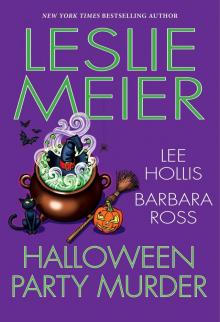 Halloween Party Murder
Halloween Party Murder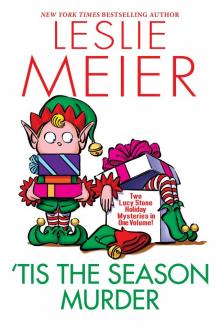 'Tis the Season Murder
'Tis the Season Murder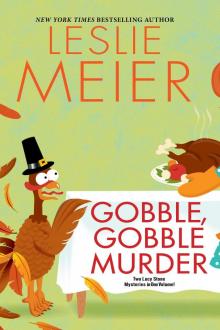 Gobble, Gobble Murder
Gobble, Gobble Murder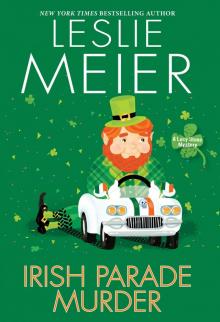 Irish Parade Murder
Irish Parade Murder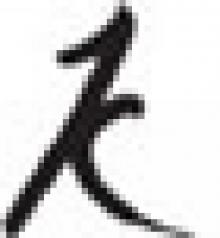 Bake Sale Murder
Bake Sale Murder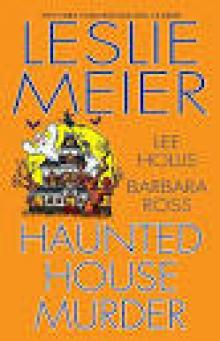 Haunted House Murder
Haunted House Murder Father’s Day Murder
Father’s Day Murder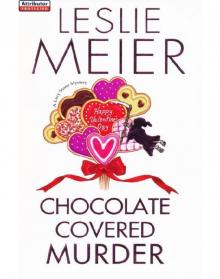 Chocolate Covered Murder
Chocolate Covered Murder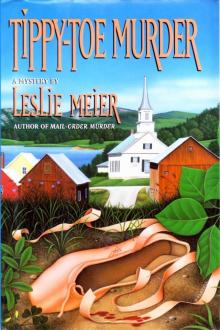 Tippy Toe Murder
Tippy Toe Murder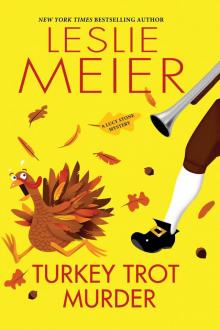 Turkey Trot Murder
Turkey Trot Murder New Year's Eve Murder
New Year's Eve Murder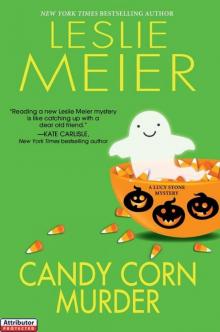 Candy Corn Murder
Candy Corn Murder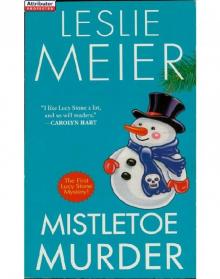 Mistletoe Murder
Mistletoe Murder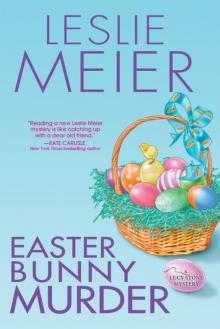 LStone 20 - Easter Bunny Murder
LStone 20 - Easter Bunny Murder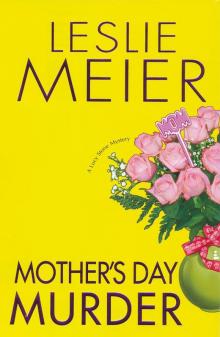 Mother's Day Murder
Mother's Day Murder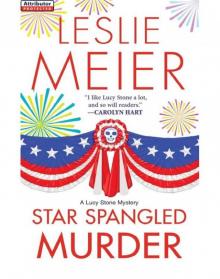 Star Spangled Murder
Star Spangled Murder Silver Anniversary Murder
Silver Anniversary Murder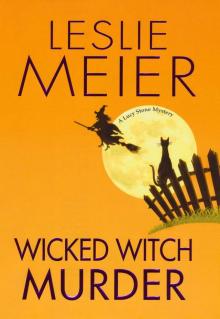 Wicked Witch Murder
Wicked Witch Murder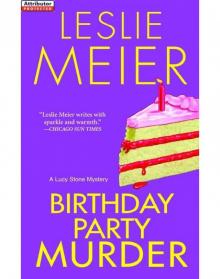 Birthday Party Murder
Birthday Party Murder Wedding Day Murder
Wedding Day Murder French Pastry Murder
French Pastry Murder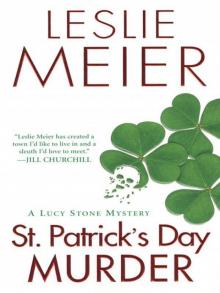 St. Patrick's Day Murder
St. Patrick's Day Murder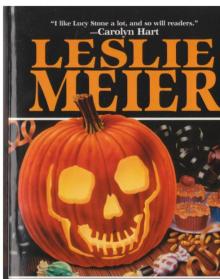 Trick or Treat Murder
Trick or Treat Murder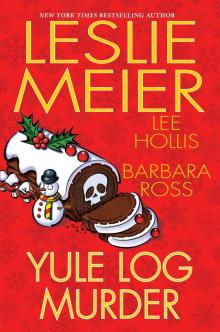 Yule Log Murder
Yule Log Murder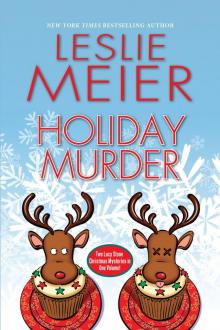 Holiday Murder
Holiday Murder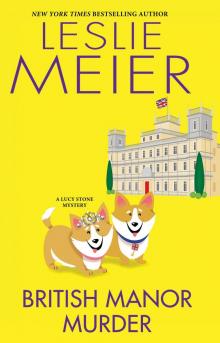 British Manor Murder
British Manor Murder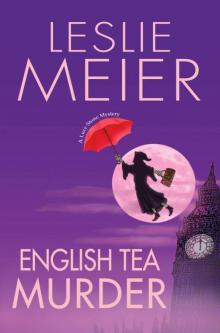 English Tea Murder
English Tea Murder